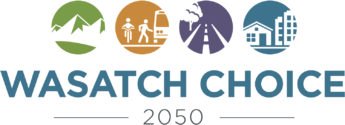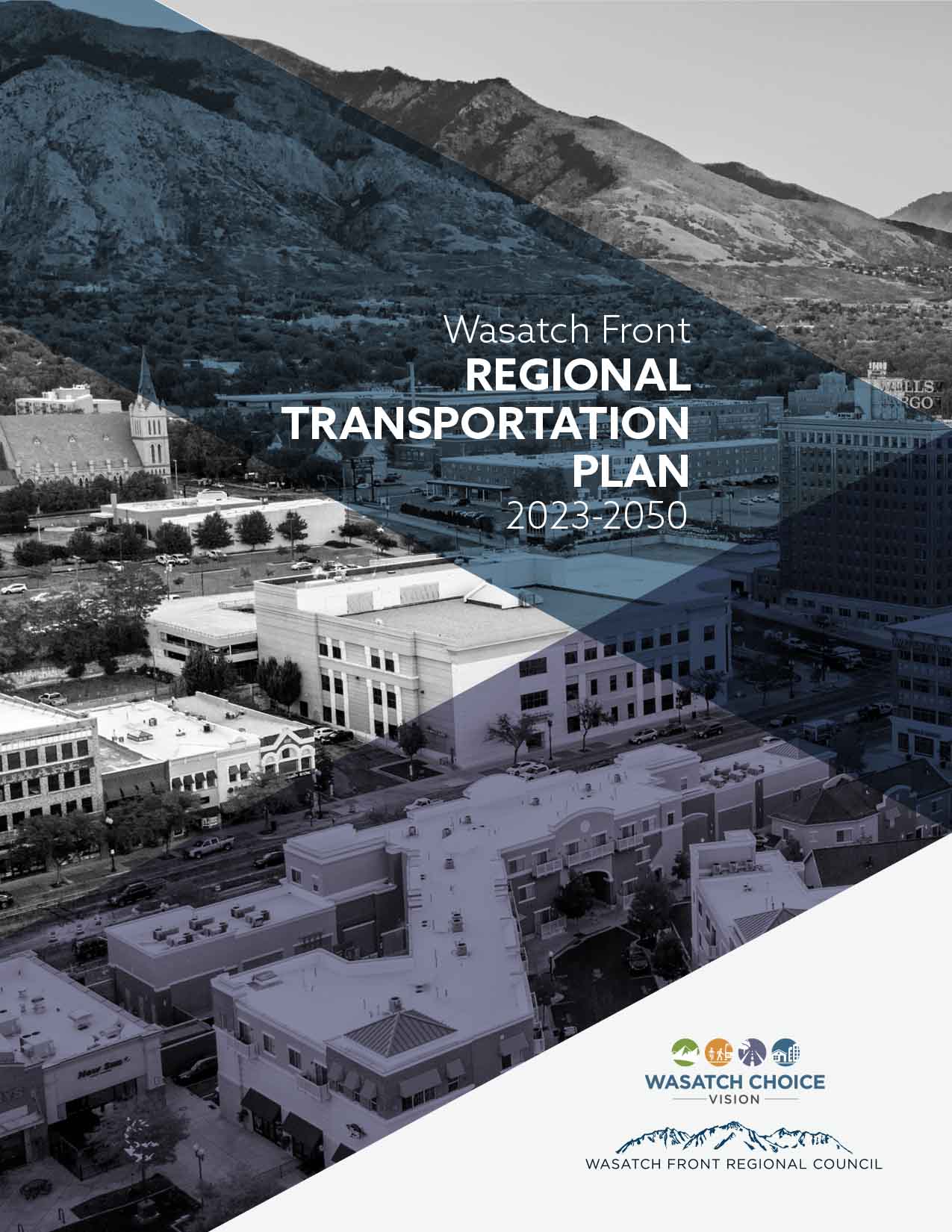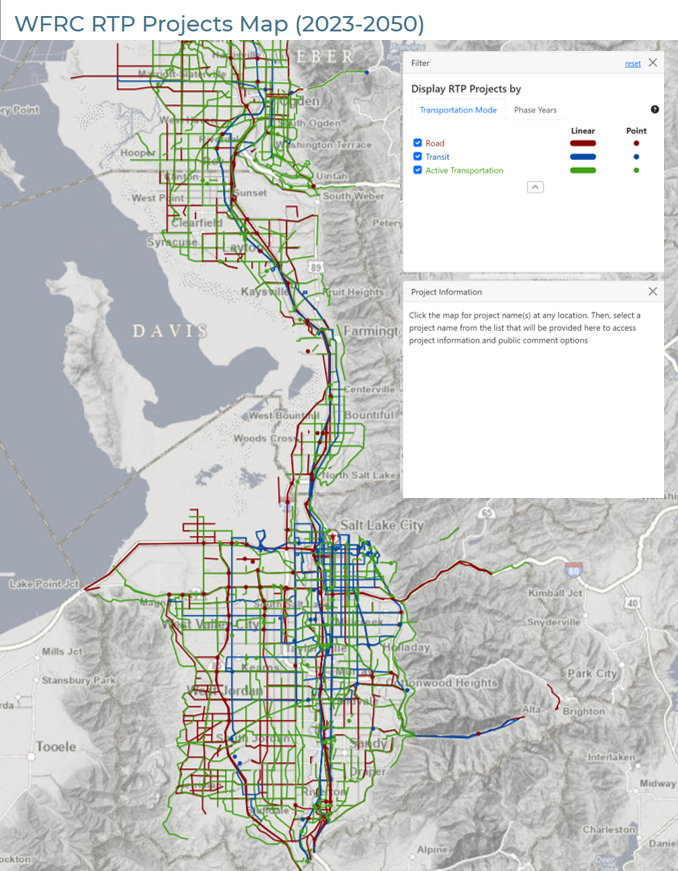The Regional Transportation Plan (RTP) sets the regional long-term strategy for our Region’s future transportation system. The 2023-2050 RTP outlines investments for all modes of transportation and forms the transportation element of the Wasatch Choice Vision. WFRC, in partnership with local governments, transportation agencies, community organizations, local stakeholders, and residents, adopted the 2023-2050 RTP in May 2023.
The 2023-2050 RTP is informed by research, discussions, and technical modeling and forecasting to help us understand how the RTP might help us collectively achieve regional quality of life goals. The RTP acknowledges that the Region will not be able to afford all our transportation needs – we must prioritize maintaining a good state of repair, improving safety, and constructing and operating new roadways, transit services, and active transportation facilities. Therefore, RTP is financially constrained within a reasonably anticipated budget using a performance-based planning approach.
This planning process is coordinated with statewide transportation partners to develop common goals, planning time horizons, performance measures, and financial assumptions, which collectively form Utah’s Unified Transportation Plan.
Utah is experiencing rapid growth. This amplifies the weight of the decisions we make now and over the next few decades. The RTP addresses growth patterns and the transportation of people and goods which impact growth related issues such as poor air quality, high costs of living, and congested roadways. The RTP looks to the future to consider how transportation infrastructure can work with land and economic development decisions to maximize overall quality of life. Further, this RTP creates a framework for understanding and responding to future uncertainties and external forces that have the potential to alter our transportation, land use, and economic systems. By doing so, WFRC hopes to foster resiliency in the Region that helps cities respond and adapt to future challenges and changes.
Recent four-year planning cycles have increasingly recognized the relationship between transportation, land use, and economic development. Holistic planning of these three elements in concert has led to the adoption of the Wasatch Choice Vision, our communities’ shared vision for transportation investments, development patterns, and economic opportunities that will enhance the Region’s quality of life. The RTP informs the Wasatch Choice Vision. Several partners are involved in the development of the RTP and the Vision, including the Utah Department of Transportation (UDOT), the Utah Transit Authority (UTA), and county and city governments, along with the Mountainland Association of Governments (MAG), other agencies, stakeholders, and the public.
As the designated Metropolitan Planning Organization (MPO) for Davis, Salt Lake, Weber, and southern Box Elder Counties, WFRC is responsible for coordinating the Wasatch Choice Vision and the regional transportation planning process that is updated and adopted every four years. The planning process looks out several decades into the future to anticipate needed transportation investments. The Wasatch Choice Vision identifies transportation projects and investments, the use of land near those investments, and associated economic development strategies to achieve desired outcomes for local communities and the Region as a whole. The Wasatch Choice Vision also provides recommendations and resources to help stakeholders achieve those outcomes.
The Wasatch Choice Vision is built upon four key strategies.
Ten goals form the foundation for the development of the Wasatch Choice Vision and the 2023-2050 Regional Transportation Plan. These goals were adopted by the Wasatch Front Regional Council in October 2016.
For additional information regarding the RTP, please contact Jory Johner.




